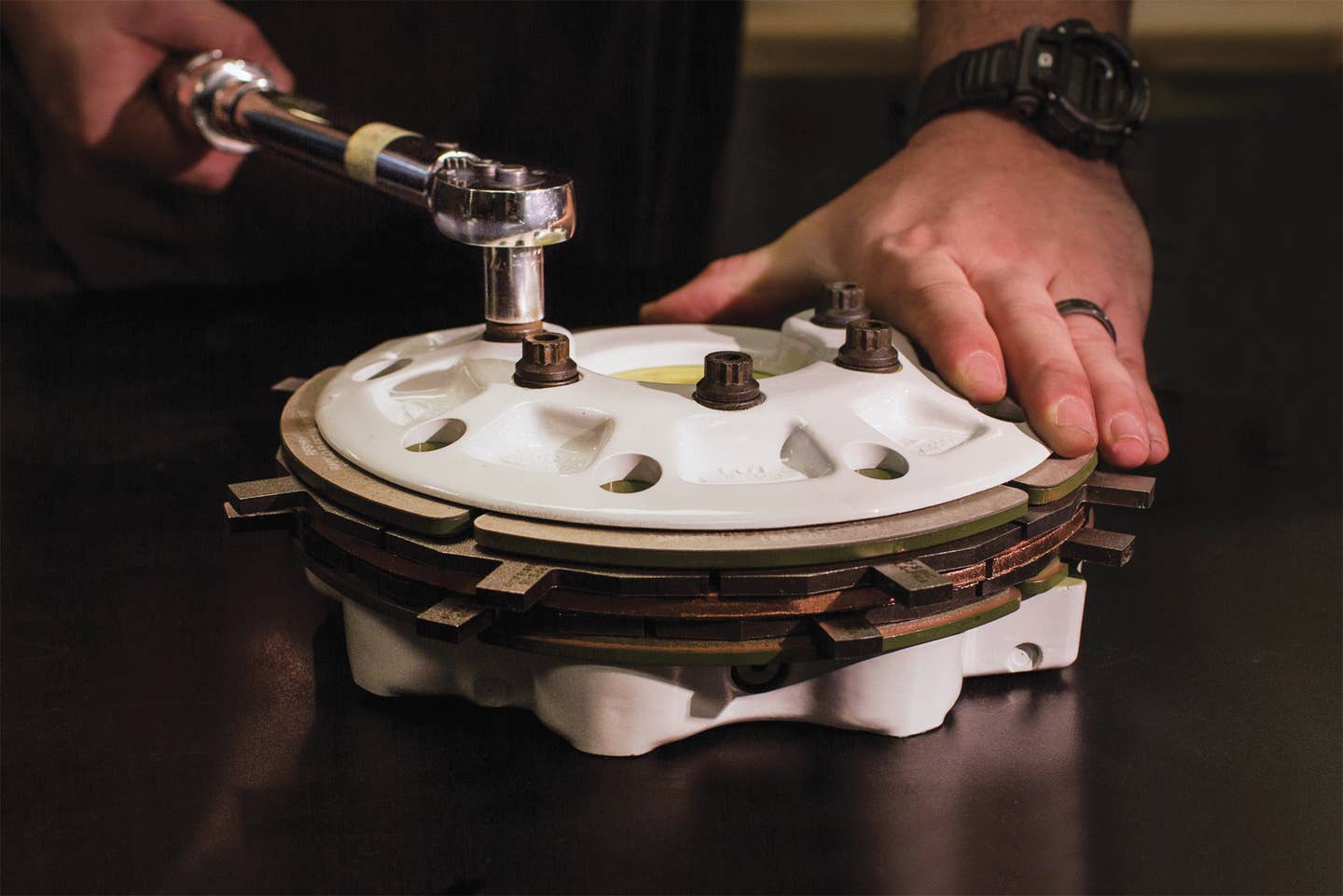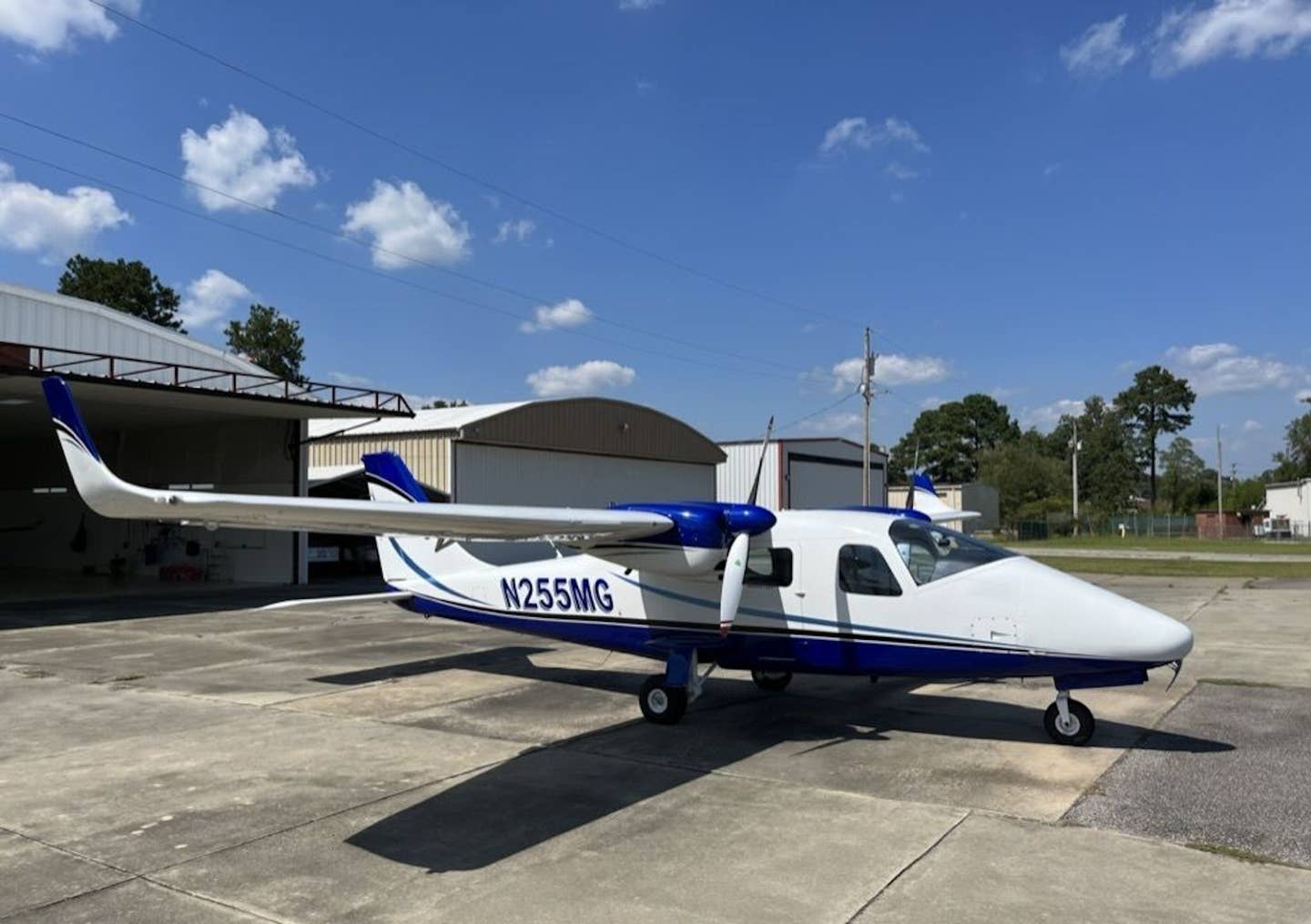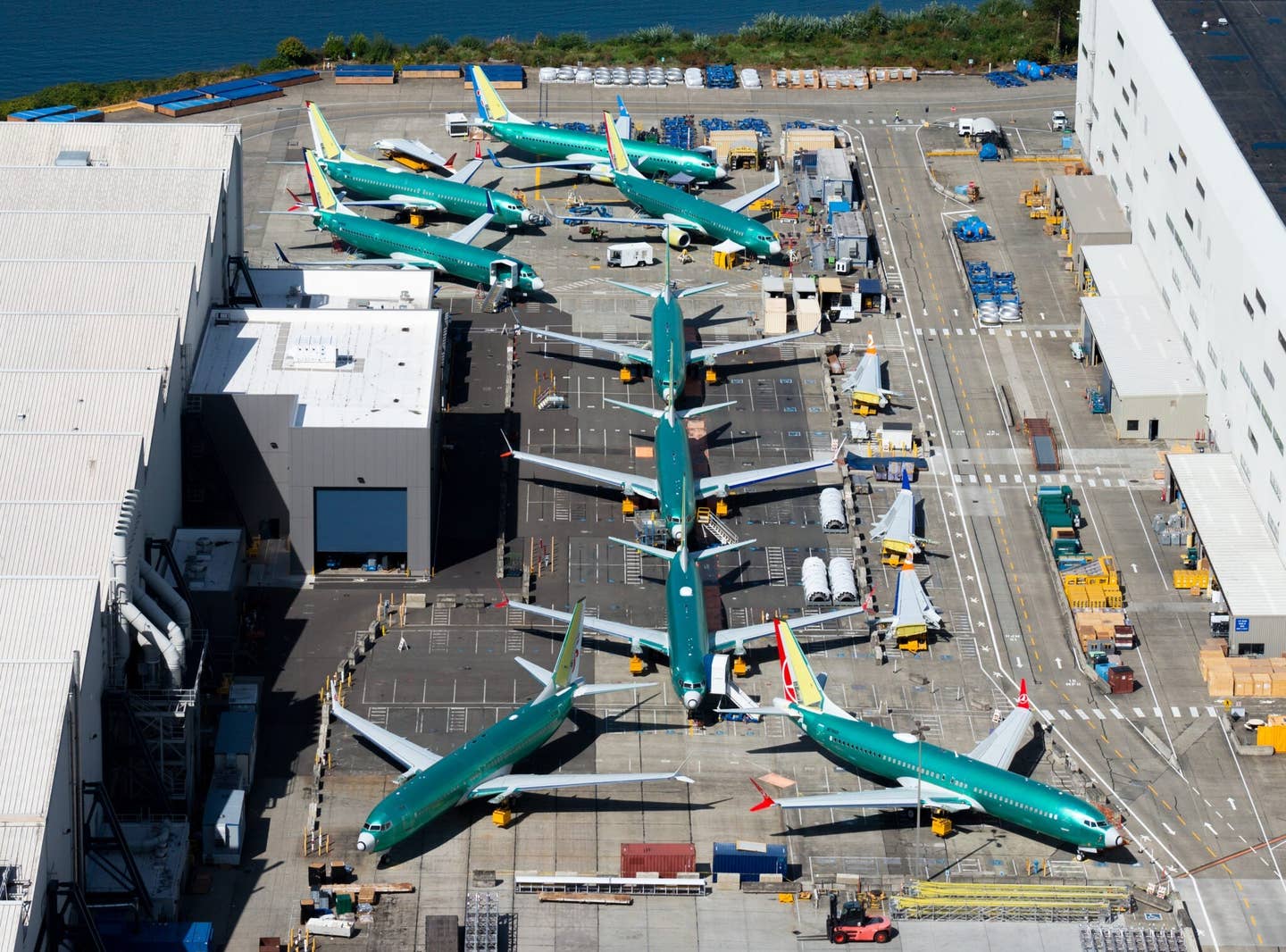The Daily Life of a Repair Station
A look at these businesses reveals the state of modern aircraft maintenance—from the individual owner to a global scale.

There is beauty in what folks create behind the doors of a certified repair station—honest work, technical in nature, and mission critical to serve the customer. [Courtesy: Richard Scarbrough]
The day begins like any other. At sunrise, commute to the office, choose a parking spot, and pull in. Tap the security pad with an ID badge, flick on the lights, dock in the laptop, and start the coffee. The screen blinks to life, emails flood the inbox, and Outlook dings and pops up with the day’s first meeting.
This is how the day in the life of a certified repair station begins. While the above may seem routine and mundane—no different from any other profession—it is not. Long before the day starts, scores of others are already hard at work. Teams operate in every corner of the globe, working to fulfill the mission.
If you're not already a subscriber, what are you waiting for? Subscribe today to get the issue as soon as it is released in either Print or Digital formats.
Subscribe NowSome companies are conglomerates with policies and procedures designed to ensure success at any facility across the world. Others are true small business ventures, staffed by family members.
Precision Aviation Group (PAG) FAA Repair Station is one of humble beginnings, as the company was literally founded in a broom closet. Since then, Atlanta-based PAG has begun an upward trajectory.
- READ MORE: The Aviation of Things
Adjacent to Atlanta Regional Airport-Falcon Field (KFFC), Aircraft Accessories International (AAI) FAA Repair Station in Peachtree City, Georgia, is an up-and-coming shop. Founded in 2014, it specializes in helping owners maintain older aircraft. Longtime readers of my Maintaining Your Airplane column online will be familiar with Pinnacle Aircraft Engines FAA Repair Station in Silverhill, Alabama, where JD Kuti overhauls Lycoming and Continental aircraft engines.
Not to be confused with the manufacturer, Sensenich Propeller Service FAA Repair Station in Lititz, Pennsylvania, specializes in propeller service and overhaul. Each of these is successful in its own right. Understanding their success means understanding the mission.
Mission-Critical Operator Support
PAG began life as Precision Heliparts Inc. (PHP). Founded in 1993 by Scott James, the company’s first business model was to supply parts to the helicopter industry, centering on mission-critical operators: medevac, law enforcement, and the Department of Defense (DOD). They rely on PAG’s supply chain to keep them mission ready. One canceled flight could lead to loss of life, a reminder of why PAG is in business.
In 1996, David Mast became president and CEO, and shortly after in 1999, PHP was named one of America’s fastest growing companies by Inc. magazine. Mast and James knew there was strength in numbers, and an expansion seemed to be the next step for progression. Western Canada is home to scores of helicopter operators, and in 2002 PHP established Precision Heliparts-Canada (PHP-C) in Vancouver, British Columbia.
Customers demand precision, so PAG begins its name with that. After expanding the company, the founders sought to control its destiny by becoming an FAA Part 145-certified repair station (CRS). In 2003, PHP obtained FAA certification and entered the maintenance, repair, and overhaul (MRO) market.
AAI’s journey began when team members of another repair station wanted to take a different approach to the customer experience. There comes a time when one must exercise the freedom to make a choice if necessary. AAI recognized a need to upgrade the support of older aircraft and seized the opportunity.
When Pinnacle changed ownership, the new leaders expanded the business model from a single scope, serving essentially one customer, to expanding and offering top-quality reciprocating engine service to everyone.
Customer Support Commitment
PHP reached another milestone in 2004 with the acquisition of Atlanta neighbor Precision Avionics and Instruments (PAI), and rebranded as Precision Aviation Group (PAG). PAG maintains 20 repair stations and more than 850,000 square feet of sales and service facilities in the U.S., Canada, Australia, Singapore, and Brazil. Using an inventory-supported maintenance, repair, and overhaul (ISMRO) business model, PAG is well positioned to support its growing global client base, providing MRO and supply chain solutions for fixed and rotary-wing aircraft.
PAG world headquarters sits adjacent to Hartsfield-Jackson International Airport (KATL) in Atlanta, led by accountable manager David Scarbrough. The AM, as defined by the FAA in Advisory Circular (AC) No. 145-9A, is the person designated by the repair station to be responsible for and have the authority over all operations conducted under Part 145. The AM also acts as the station’s FAA point of contact.
“Things are busy, and we are growing,” Scarbrough said. “Please forgive the dust. The facility is going through a renovation and expansion.”
The company is creating centers of excellence and overhauling its workspaces, shops, and conference rooms. In today’s world of lean manufacturing, 5S methodology, and Kaizen events under Six Sigma, companies must evolve through continuous improvement or lose market share.
We started our tour in the shipping and receiving department. Here, rows of boxes lined up on conveyor belts wait their turn to be checked in by the crew. People overlook the importance of shipping and receiving, which is a huge mistake. This team is your first line of defense for spotting incoming errors, such as paperwork issues or critical damage incurred during shipping.
It is also the last to touch the parts before your customer sees them.
The tour then proceeds through the various repair shops at the Atlanta branch. Our next stop was the instrument shop. We visited several more functional shops, including gyro and pneumatic, starter generator, accessories, and avionics. We finished up at wheels and brakes. As we walk through the shops, my A&P brain cannot help but start to piece together all the different components I see. Pretty soon, we almost have an entire airplane.
One of PAG’s stated growth strategies is to combine unmatched customer service with investments in inventory and MRO capabilities. This is where the ISMRO comes into play. Let’s say you are the director of maintenance for a corporate aviation entity with a small fleet of Beechcraft King Airs and one Cessna Citation X. One of the King Airs is coming due for an inspection, and another just experienced a starter generator failure. The X is off on a trip, and one of the company executives has to be in Omaha, Nebraska, to close a huge deal. They could fly commercial, but why go to the trouble and expense of maintaining a corporate flight department if you have to buy a ticket and stand in line with your shoes off?
Your choice is clear: Fix the King Air, pronto. The engine cowling comes off, and the maintenance crew pulls off the starter generator from the left engine. The generator comes off, but the end of the shaft is still in the engine. Yep, it’s a sheared shaft. A quick trip down to PAG, and the shop inducts the part. The good news is it can fix it. The bad news is a shaft is on back order and will not be in for a week. When all hope seems lost, the DOM calls PAG, and a customer experience coordinator answers before the third ring. The rep states an exchange is ready to go, and they will accept the older part as a core. The part ships, the mechanics install it, and the executive makes the meeting. Everyone wins.
Adam Fett, director of sales for PAG Atlanta, said the company does not deploy an outside sales force. Rather, the inside team will make customer visits and solidify the relationship. When I asked if the team was split by region or aircraft platform, Fett said that was not the case. “At PAG, we let the client decide who their rep is,” he said of a concept that is revolutionary for the MRO industry.
Our stop at AAI is essentially the same, only on a much smaller scale. CEO Kevin Allen and I met at the shop, and I could tell from the first few minutes that his facility was squared away. Are you familiar with the book Broken Windows, Broken Business: How the Smallest Remedies Reap the Biggest Rewards by Michael Levine? Its main point: Take care of the little details in your business, and the rest will fall into line. AAI maintains a spotless facility, which is not easy when dealing with decades-old aircraft parts.
Dan Landis serves as the general manager of Sensenich Propeller Service, and he is the main point of contact for technical support. Landis recently told me that the best part of his job is getting into the field and talking propellers with his customers. One of the best ways to connect with people is through organized events, so there is always something on the company’s calendar. Landis attended the Beechcraft Heritage Museum’s biggest event of the year, the Beech Party, in October in Tullahoma, Tennessee.
Start with Why
Simon Sinek has a best-selling book called Start with Why: How Great Leaders Inspire Everyone to Take Action. To begin, a business must establish and live by its core values. Many companies lose sight of this and drift far from the intended path. PAG states its clearly: “passion, service, integrity, teamwork, and quality.”
The leaders of PAG’s four sectors, avionics, components, engines, and manufacturing/DER services gather periodically to map out a strategy for the future. Mast established this practice years ago and even saves old goals written on index cards. PAG’s growth is based on two key foundations: combining unmatched customer service with investments in inventory and MRO capabilities, and establishing sales and service facilities close to customers worldwide.
Keith Stringer, vice president of engine services, oversees PAG’s Engine division. When asked about his biggest challenges, Stringer singled out the supply chain, specifically raw materials. Jordan Webber, vice president of component services, joined the organization in 2012, launching from scratch and running several divisions of PAG. In addition to running the component services division, Webber is also managing Canada and Australia. The supply chain is also a headwind for him, along with rubber for tires.
Ketan Desai is PAG’s chief sales and marketing officer. Desai said he has to be conscious of the cultural nuances when operating in other parts of the world. Some cultures wish to negotiate the price of goods and services, and it is up to the on-site leadership to work with the team to manage the transactions. Each location takes pride in the region it serves and incorporates that culture into the local PAG business. This is evident in the PHP-Canada logo, which features the corporate brand but also sports a Canadian maple leaf.
For those who work in the aviation sales business, they know of special elements not found in other industries. Take, for example, the aircraft rotable parts sales and core charges. KT MacIntosh, chief financial officer, explained that she has specific internal controls for outstanding cores, core returns, and unserviceable core inventory. In the story of the starter generator mentioned earlier, there was no core charge because the mechanic provided the core in advance.
Mast first joined the company with a singular vision: serving customers. That was his “why.” He knew that the core customer base was wholly first responders, and every mission was critical for them. One key thing to remember is that helicopters require 10 hours of maintenance for every one hour of use on a fixed week. To PAG, there are 10 times more opportunities to serve. We aren’t discussing just missing a big presentation—someone could perish.
Following the day of interviews, I reviewed my Moleskine notebook and the notes from every interview from the executive team to the technicians. They all had the same “why,” simply to serve. This was real. As I type this out, I keep glancing back at the Sinek book subtitle. Service is baked into the culture.
Over at AAI, Allen will point-blank tell you his “why.” Allen and I met recently and discussed why he chose the small business route and what makes his shop tick. “There needs to be an alternative between the original equipment manufacturer (OEM) and eBay,” Allen said. “At AAI, we have a passion to help older aircraft operate safely.”
We talked about how sometimes, if an older part is no longer available, a solution could be obtained using parts manufacturer approval (PMA) pieces or a designated engineering representative (DER) repair to return the unit to service.
At Kuti’s Pinnacle shop, the focus is on aircraft reciprocating engine service. Sometimes, diversification can dilute a brand, especially regarding reciprocating engine overhaul. Kuti said he needs to control quality, which means sticking to what he knows best—a passion for perfection.
PAG is constantly looking for ways to improve its business. When armature and stator rewinding became a bottleneck for production in 2020, it bought a rewind facility, invested some capital, and kept the line rolling. Landing gear requires a great deal of maintenance, and in the spirit of tip-to-tail coverage, PAG acquired landing gear provider Trace Aviation in 2021.
This is only the beginning, and each move forward is another step toward the vision set in the early days of the firm. We finished our conversation by touching on my favorite subject—aircraft maintenance. There is beauty in what those folks create behind the shop doors—honest work, technical in nature, and mission critical to serve the customer.
The Repair Station Process
Pilots need to understand specific, helpful nuances before engaging a certified repair station. This is hardly an all-inclusive list, but one that can provide familiarity with the process to significantly enhance your understanding:
BEFORE THE CALL
• Do your homework when choosing a repair station.
• Call or visit the shop and build a relationship with a specific rep. Building a rapport will give you confidence and may even save you some money.
• Ask for a detailed estimate, clearly identifying standard overhaul and over/above items. Inquire if the shop charges a clean-and-inspect fee.
DURING THE VISIT
• Ask to approve any new charges in writing not included in the original estimate.
• Do not try to source this material on your own. The shop is most likely receiving a discount and buying from approved sources. You may end up paying more for less of a product.
• Review the bill of material (BOM) and verify it matches the original estimate. If you see terms like “convenience assembly,” it is a legitimate charge the shop uses to cover additional costs like supplies, solvents, and hardware.
AFTER RETURN TO SERVICE
• Follow all post-visit instructions from the shop, including handling, setup, and break-in procedures.
• If your unit cannot be repaired or you decline the quote, the shop may initiate beyond economical repair (BER) charges.
• If it happens, always ask for your core back.
• After the visit is not time to negotiate. Take care of that before sending in the part for service.
This column first appeared in the November 2023/Issue 943 of FLYING’s print edition.

Subscribe to Our Newsletter
Get the latest FLYING stories delivered directly to your inbox







